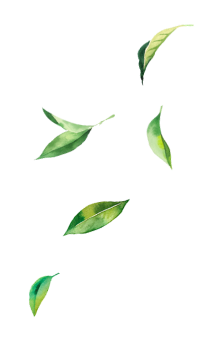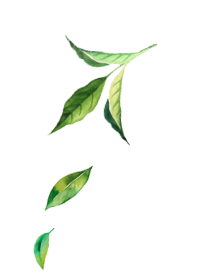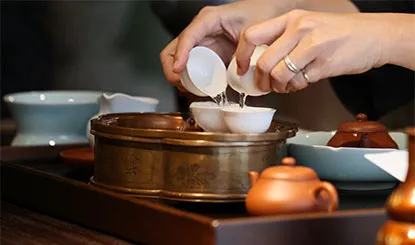




The Gong-Fu Tea

By/ Liu, Han-Chieh, founder of Chun Shui Tea Group
Published in / April 2017, 6th Issue of “Chunshuier”
Let’s expand from just focusing on the historical events that disrupted the trade of Chinese tea due to the Opium Wars. The British cleverly leveraged the perceived instability of oolong tea quality to their advantage. By streamlining the tea-making process and ensuring consistent quality on a large scale, they pioneered the production of what we now recognize as black tea domestically. By 1848, under British control, Ceylon (present-day Sri Lanka) had developed the capability to cultivate tea leaves across 500,000 hectares of land. Consequently, oolong tea exports from China became obsolete, overshadowed by the rise of British-produced black tea. Who cares whether the tea you can't sell abroad is called Sechong or Pouchong? After all, the practice of brewing tea in small teapots and cups isn't ingrained in the lifestyles of Europeans and Americans. Despite having ample time, they don't indulge in the leisurely ritual of gradually steeping tea (Note 1) from teapots and cups.
Speaking of Taiwan during the Qing Dynasty, in the Jiaqing era, Ke Chao smuggled five bushels of tea seeds to Taiwan and planted them in Jieyu Pit in Jinshan. Despite the ban on migration to Taiwan, the island welcomed smuggled immigrants and agricultural goods. This influx led to a rise in tea production and immigration. Fujian immigrants brought with them the cultural practices of Minnan, including the tradition of tea drinking, which gradually flourished in Taiwan. In fact, during the early period of Chinese tea exports to Europe, Zheng, Cheng-gong's (Koxinga) forces were also active in military actions in Taiwan at the same time. The prevalent brewing technique using small teapots and cups in Zhangzhou and Quanzhou during a period of limited communication and identity verification evolved into a means of clandestine communication among gangs. By arranging teapots and cups in specific configurations, secret messages were conveyed and identities confirmed. This covert method of communication also became ingrained in the daily lives of residents. Historical records indicate that the dissemination of Minnan Gong-fu tea in Taiwan commenced over a century before the smuggling of tea tree seeds.
The practice of Gong-fu tea in Taiwan may not be as elaborate as in Fujian, but it still holds its own unique charm. Chang, Hung-Yung (Note 2) classified Gong-fu tea into different social classes in the region, including Gong-fu tea for monks, wealthy merchants, literati, and commoners. Despite the substantial influx of commoner immigrants to Taiwan, the Gong-fu tea tradition introduced by Chen, Yong-Hua (Note 3) from Quanzhou in the late 16th century persisted and flourished throughout the 17th and 18th centuries. Even during the Japanese colonial era, when Japan neither actively promoted nor prohibited Gong-fu tea, scholars such as Lian Heng (Note 4) began to write and advocate for Gong-fu tea practices in the early 19th century. They promoted Gong-fu tea methods involving specialized teapots and cups, meticulous arrangement of tea leaves, and a focus on the precise process of pouring water. The Chinese Civil War resulted in a divide between the two sides of the Taiwan Strait, yet Taiwan's Oolong tea culture continued to thrive. The cessation of exports prompted a surge in domestic tea culture. In 1975, the liberalization of tea production for small farmers sparked a proliferation of Oolong teas from various regions. By 1978, Gong-fu tea houses emerged in Taipei, Taiwan's capital, establishing themselves as the largest and culturally significant venues for tea enthusiasts. These tea houses introduced novel tea utensils and modernized drinking protocols. In Kaohsiung, the Zheng, Yuan-Wai Tea House innovated the Three Talents Tea Brewing Method based on the gang-style Gong-fu tea method. It was further promoted through tea competitions, marking the revival of a new Gong-fu tea culture in Taiwan.
Gong-fu tea houses in Taiwan's five major cities, adorned with garden settings and Southern-style architecture, experienced a period of flourishing starting around 1978. Over the span of approximately twenty years, Gong-fu tea culture thrived in Taiwan. With tea from mainland China unavailable, Taiwanese teas from diverse regions gained prominence, particularly high-mountain teas. The Taiwanese-style double-cup Gong-fu tea method gained popularity among locals, enabling them to savor the tea's aroma, color, and flavor more profoundly.
The individual known by the courtesy name “Gan Hou” (Note 5) apprenticed under Chou, Kuo-Chin (Note 7), a disciple of the actor Xu, Bu-Liao (Note 6). He learned the Anxi-style and Chaozhou-style tea brewing methods, which are the three traditional methods of the Hongmen sect. Being from Zhao’an himself, Mr. Chou mastered the essence of Gong-fu tea brewing. Additionally, he learned the Qingzhou-style tea brewing method from Chen, Chun-Liang (Note 8). Gan Hou authored and published books and illustrated guides on tea that sold by the thousands. In 1983, he settled in Taichung, where he began teaching the Gong-fu tea brewing method. However, facing financial constraints, he couldn't sustain himself solely through teaching tea. To address this, he rented a shop and started selling his own creation, cold tea (Note 9), which quickly gained popularity. Despite expanding to several shops, he remained dedicated to his passion for tea. He continued to instruct hundreds of students in the Gong-fu tea brewing method, categorizing their techniques into five brewing methods within his company: the Fragrant Double Cup Method, the Mature Fragrance Gong-fu Tea Method, the Scholar's Tea, the Boiling Tea Method, and the Cold Tea Method.
For decades, the cold tea brewing method he created has proliferated and spread to various regions such as Hong Kong, Macau, mainland China, Singapore, Malaysia, Europe, and America. It has garnered significant attention and emerged as the most popular contemporary tea brewing method. In contrast, the other four methods have remained relatively confined to the cultural and artistic circles of the middle class. Like Taiwan's semi-fermented tea industry, while the quality is high, the number of participants is limited. The future prospects of the art of tea in Taiwan remain uncertain.
The dynamics of trade have reshaped the economics of tea, leading to ongoing evolution in tea culture on both sides of the Taiwan Strait. Cold tea, with its youthful allure, has captured the attention of consumers on both sides. The thriving Mainland Chinese economy awakens a new generation of tea consumers and integrates the art of steeped tea, preserving the traditional Minnan Gong-fu tea culture. Moreover, it flourishes across mainland China, with a more sophisticated understanding of the four essentials of tea brewing, elaborate settings, and a diverse range of tea offerings. No longer confined to the quaint charm of small teapots and cups of oolong, even pu'er black tea, under the meticulous study of “Gong-fu”, is presented akin to the artistry of wealthy merchants and literati from centuries past. Over thousands of years, wars have brought destruction, while peace has fostered civilization. Indeed, these words reflect profound wisdom.
While tea culture wanes in Taiwan, it has flourished in Mainland China. The ongoing evolution of Chinese tea drinking is a testament to its rich history spanning thousands of years. From ancient methods of pounding and steeping tea to the introduction of powdered tea and brewing techniques using both large and small pots, each era has left its mark on the tea culture. Today, we see a synthesis of these traditions, with cold beverages incorporating elements from past tea-drinking methods. Like a newborn calf, tea continues to grow and adapt, with its evolution seemingly endless. The resurgence of Gong-fu tea in recent peaceful years has breathed new life into this ancient tradition, revitalizing it on both shores of the Taiwan Strait. It appears that for centuries to come, the fragrance of tea will remain a cherished part of human life, passing down through generations and becoming an enduring tradition.
Note 1: The concept of “Gradual Steeping Tea-Drinking Method” (漸呈式飲茶法) was invented by Liu, Han-Chieh, distinct from the “peeling” method of brewing black tea.
Note 2: Chang, Hung-Yung: A researcher in Taiwanese tea studies, author of over ten volumes on the compilation of historical tea leaves, and a contemporary authority in tea studies.
Note 3: Chen, Yong-Hua: A native of Tong'an, Quanzhou, served as the chief military staff under Zheng Chenggong (Koxinga).
Note 4: Lian Heng: A renowned figure in Taiwan, known for his expertise in tea, poetry, and as a writer of Taiwan's comprehensive history.
Note 5: Gan Hou: Also known as Liu Han-Chieh, the inventor of bubble milk tea.
Note 6: Xu, Bu-Liao: A Taiwanese actor in the 1970s, skilled in drama and magic.
Note 7: Chou, Kuo-Chin: A disciple of Xu, Bu-Liao, proficient in the Chaoshan tea brewing method.
Note 8: Chen, Jun-Liang: A businessman from Qinzhou, involved in the development of teaware.
Note 9: Bubble tea: A cold drink tea invented by Liu, Han-Chieh in 1983.







